
No século XIX inicia-se o processo de restauro de Carcassonne que terá iniciado com a sua Catedral mas que depois se estendeu a outras estruturas relevantes como o Castelo e as Muralhas.
A cargo do projecto estava o arquitecto francês Viollet-le-Duc que na altura levantou muita polémica por não estar a fazer uma reconstrução mais fiel ao que teria sido, no final a obra foi apreciada e hoje podemos disfrutar deste lugar da época medieval que nos faz parar no tempo.
Inside the fortified city of Carcassonne is your castle. It was built in the twelfth century and was owned by the family Trencavel to have been given at the French crown.
In the nineteenth century begins the process of restoration of Carcassonne that will start with its cathedral but later extended to other relevant structures such as the Castle and the Walls.
In charge of the project was the French architect Viollet-le-Duc who raised much controversy at the time for not doing a reconstruction more faithful to what would have been the end of the work has been appreciated and now we can enjoy this place from medieval to us stops in time.
Inside the fortified city of Carcassonne is your castle. It was built in the twelfth century and was owned by the family Trencavel to have been given at the French crown.
In the nineteenth century begins the process of restoration of Carcassonne that will start with its cathedral but later extended to other relevant structures such as the Castle and the Walls.
In charge of the project was the French architect Viollet-le-Duc who raised much controversy at the time for not doing a reconstruction more faithful to what would have been the end of the work has been appreciated and now we can enjoy this place from medieval to us stops in time.
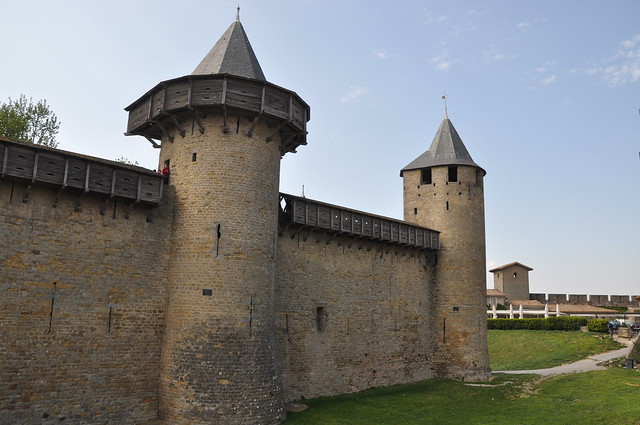
Já no seu interior podemos ver uma exposição que fala um pouco da sua história além do processo de recuperação onde podemos ver o antes e o impressionante depois.
O castelo tinha um interessante sistema de defesa que mais tarde foi reforçado com muralhas á volta da cidade. Para entrar haveria que passar por duas portas, a primeira tem um pequeno pátio em que um fosso e uma ponte a separam da segunda entrada, esta sim dá acesso ao interior do castelo. Além disso, a primeira muralha do pátio não tinha protecção dos dois lados como podemos ver noutras construções semelhantes isto era para que se os invasores conseguissem trepar por essas paredes fossem depois atingidos por arqueiros instalados no próprio Castelo.
You can see inside an exhibition that speaks a bit of its history and also the recovery process where we can see the before and the stunning after.
The castle had an interesting defense system that was later reinforced with walls around the city. To get there you would have to go through two doors, the first has a small courtyard where a moat and a bridge separate it from the second entry, but this gives access to the interior of the castle. Moreover, the first wall of the patio had protection from both sides as seen in other similar buildings to which it was intruders succeeeded climbing these walls they were then hit by the archers of the Castle itself.
The castle had an interesting defense system that was later reinforced with walls around the city. To get there you would have to go through two doors, the first has a small courtyard where a moat and a bridge separate it from the second entry, but this gives access to the interior of the castle. Moreover, the first wall of the patio had protection from both sides as seen in other similar buildings to which it was intruders succeeeded climbing these walls they were then hit by the archers of the Castle itself.
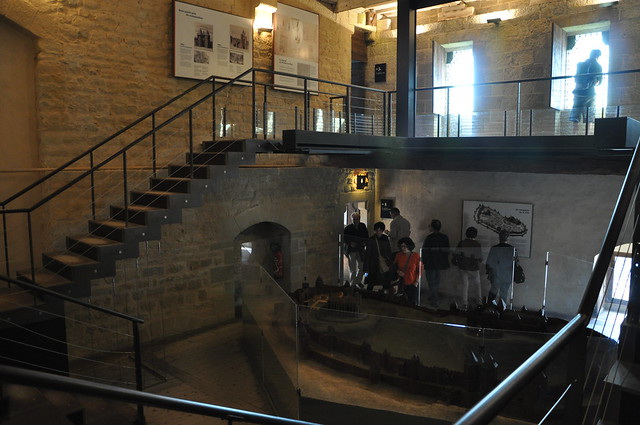
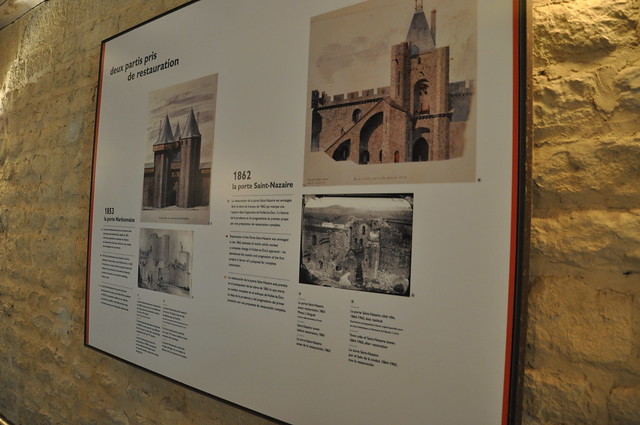
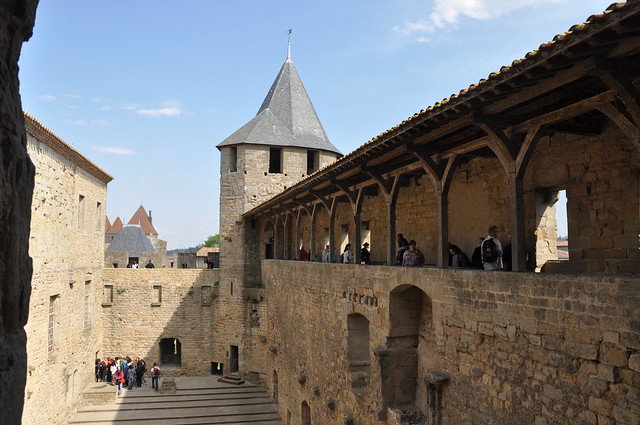
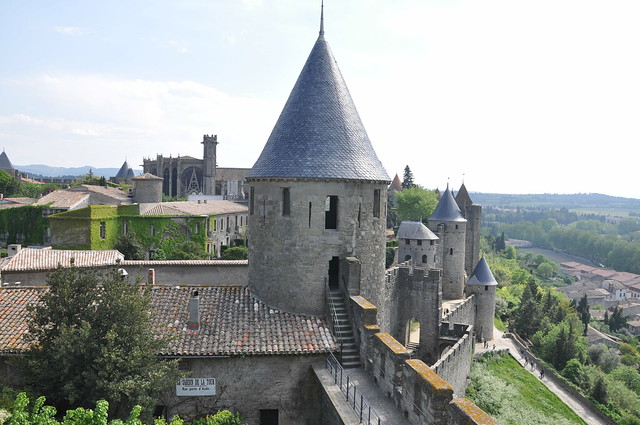
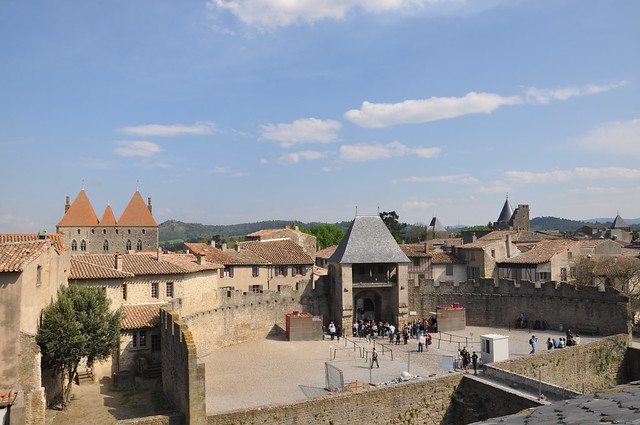
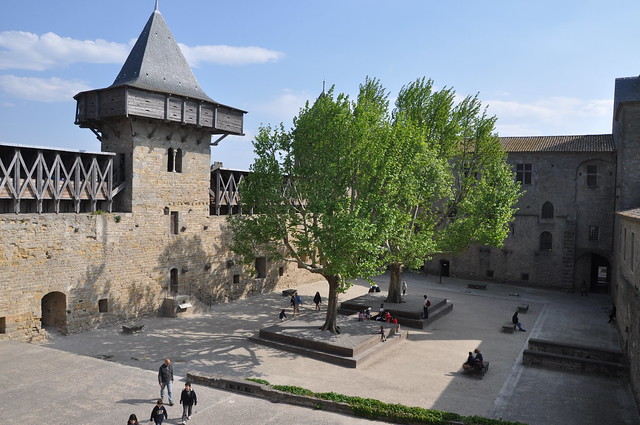
O "le donjon" ou a Torre de Menagem faz parte do palácio construído pelos Trencavel no século XII. Ao longo dos anos sofreu várias alterações e pelas marcas que apresenta poderá ter sido fortificada, diz a sua placa informativa que talvez tenha sido no século XIII durante a perseguição aos cátaros que terão encontrado no castelo protecção.
The donjon is parte of the palace built by Trencavel in the twelfth century. Over the years it has undergone several changes and the marks that features may have been fortified, it says in the information card that may have been in the thirteenth century during the persecution of the Cathars who have found protection in the castle.

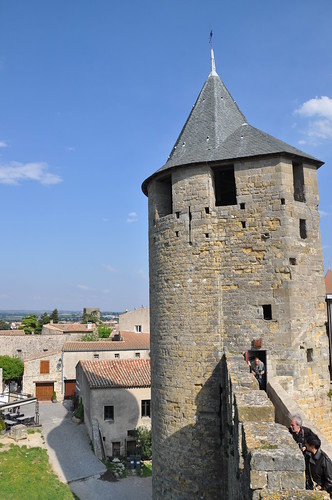
O passeio pelas suas muralhas oferecem uma excelente vista para o resto da cidade tanto a parte fortificada como o que está no seu exterior. Podemos ver uma parte da Basilíca de Saint Nazaire e Saint Celse, além da igreja Saint Gimer que está fora das muralhas.
The walk along its ramparts offer an excellent view of the rest of the city both the fortified part as what is on the outside. We can see a part to the Basilica of Saint Nazaire and Saint Celse, besides the church Saint Gimer that is outside the walls.
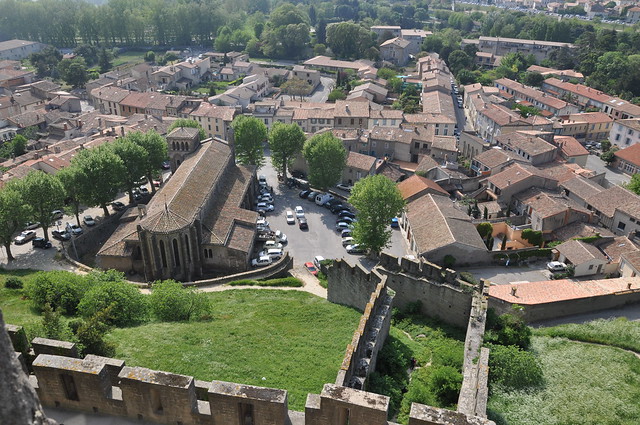
Ainda no interior do castelo encontramos uma exposição de peças arqueológicas encontradas no local e arredores como por exemplo o Calvário, uma peça do século XV retirada do cemitério de Villanière.
Still inside the castle we found an exhibition of archaeological pieces found in local and surrounding areas such as Calvary, a piece of the fifteenth century cemetery Villanière withdrawal.

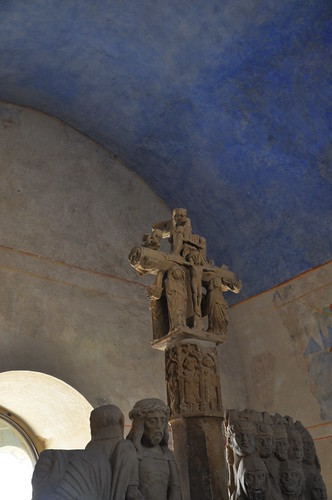
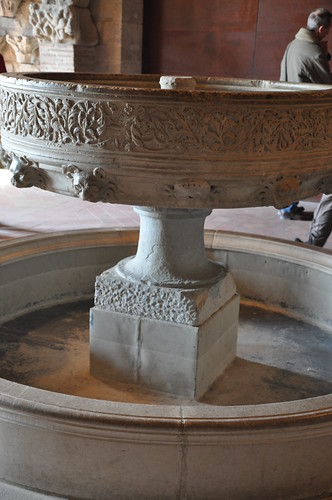
Preço das entradas: 8,5€ para adultos, para crianças é gratuito.
Entrance fees: 8,5€ per adult, for children it is free.

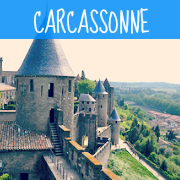
Sem comentários:
Enviar um comentário